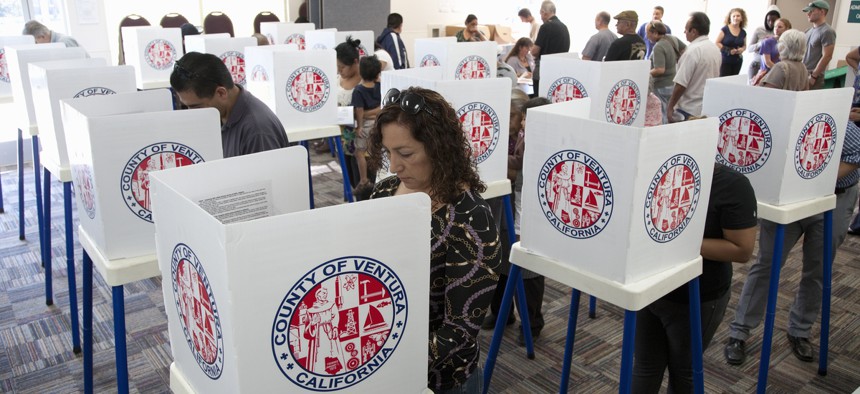DHS Preps Extra Cyber Support for States with Close Midterm Races

The federal government is planning extra cyber security resources for tight races. Shutterstock
The tightness of an election is just one factor to guide where the Homeland Security Department will field its Election Day cybersecurity teams.
The Homeland Security Department is directing additional Election Day cybersecurity resources, in some cases, to states with tight electoral races, the Homeland Security Department’s top cybersecurity official Chris Krebs said Tuesday.
While voters will cast ballots in hundreds of elections Nov. 6, about 75 U.S. House and 10 Senate races may be won by a narrow margin. The tightness of an electoral contest will just be one criteria Homeland Security uses as it decides where to embed federal cyber technicians on Election Day and it will not be a “controlling factor,” said Krebs, who is undersecretary of Homeland Security’s cybersecurity and infrastructure security division.
Krebs earlier said the department was taking into consideration vulnerabilities in particular election systems as it determines where to send Election Day cybersecurity teams.
For example, five states currently don’t use voting machines that create a paper trail that allows voters and auditors to verify whether a digital vote tally was recorded correctly. All of those states plan to transition to systems with paper trails after the midterm elections.
The greatest determinant for where Homeland Security will field its Election Day cybersecurity teams, however, is whether states have asked for that assistance, Krebs said.
“We have a number of planning factors that roll up the overarching prioritization scheme,” Krebs told reporters following an address at a cybersecurity conference sponsored by the company Palo Alto Networks.
“The fastest way to get to the top of the prioritization schema is to ask,” he later added. “If any state asks for our help, you go immediately to the top.”
The teams Homeland Security is fielding with state and local election officials will be equipped to rapidly respond to phishing and digital denial of service attacks and to hunt for intruders in election networks. Krebs declined to outline precisely where those teams will be located suggesting that knowledge could help adversaries plan election disruption efforts.
In addition to embedding cyber technicians with state and local election officials, Homeland Security will be running an Election Day cyber operations center in Washington. That operations center will include a virtual chat room to share unclassified cyber threat information to officials in all 50 states and more than 3,000 counties.
In advance of the midterms, Homeland Security offered vulnerability assessments for state and local election systems. The department has also placed sensors that scan for malware and unusual activity on election networks that serve about 90 percent of U.S. voters, Homeland Security Secretary Kirstjen Nielsen has said.
Homeland Security will continue to aid states and localities with cyber concerns after Election Day as they audit and prepare to certify final election results, Krebs said. Even after that, Krebs said he expects a steady stream of requests from states and localities as they prepare for 2020 elections.
Joseph Marks is a senior correspondent with Government Executive's Nextgov, where this article was originally published.
NEXT STORY: Thinning Forests Helps Reduce Wildfires, But There Isn't Always a Market






